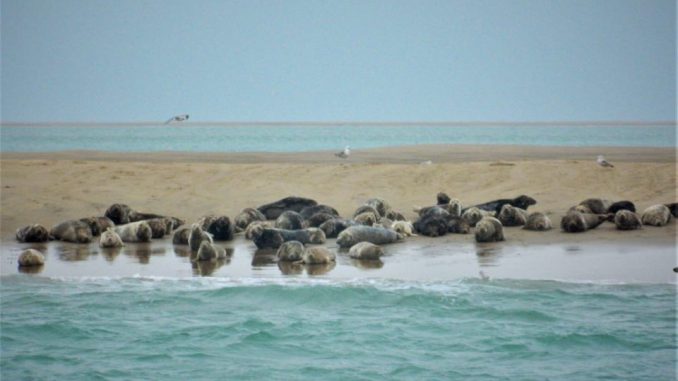
Today (September 28) is the last day for responses in the third public consultation being held by the Marine Management Organisation (MMO) on the dredging of the Goodwin Sands by Dover Harbour Board.
The consultation runs until midnight
In May 2016 Dover Harbour Board applied to the Marine Management Organisation (MMO) for a licence to dredge 2.5 million m3 of sand from the Goodwin Sands to use for landfill and construction of their new Dover Western Docks.
In January 2017 DHB appointed Volker Stein Boskalis Westminster (VSBW) as their main contractors for phases 1 and 2. In April 2017, Westminster Gravels Ltd, part of the Boskalis Westminster group, was granted a licence to dredge a new area in the Outer Thames Estuary called Area 501.
In August 2017, DHB announced they will be extracting 500,000 m3 of aggregate from this new area 501 as they need it for immediate works, reducing the amount of sand they wish to take from the Goodwins.
‘Lost jobs and regeneration?’
DHB say the Goodwins dredge would keep costs low on the £250m project to rejuvenate Europe’s busiest port.
DHB says if it cannot dredge at the Goodwins half a billion pounds would be lost in jobs, regeneration, tourism and new business.
On its website DHB states: “To bring about a new future for Dover we need to develop the western docks, creating hundreds of jobs and employment land with a new waterfront to put Dover on the map as a destination. In order to achieve this, the Port needs to use marine aggregate – sand from the sea bed.
“Marine aggregates form the building blocks of modern day life. They’re used to build homes, offices, shops and roads. There are billions of tonnes of marine aggregate just a few miles up the coast from Dover – the Goodwin Sands. The Goodwin Sands have been dredged extensively for commercial use since the Second World War; for example, twice the volume we require for the development was used in the construction of the Channel Tunnel.
“And it’s the best environmental option for a development of this size. But even though Port proposals would leave more than 99.7 per cent of the sands untouched, a Deal-based protest has taken exception.”
Other options
But the referred to pressure group – Goodwin Sands SOS (Save Our Sands) – is concerned about the environmental impact and the disturbing of war time graves.
A spokesman said: “The development is not reliant upon dredging specifically from the Goodwin Sands. There are plenty of commercial dredging sites available in the East English Channel and the Thames Estuary. These are all within the industry norm in terms of distance from site to wharf.”
They added: “Over the past year the campaign has been sent six articles about the world scarcity of sand. There is therefore a very real danger that should a dredging licence be granted now, a dangerous precedent will be set which will open the doors for the further taking of sand in the future.”
Heritage
Among the groups’ objections is the heritage of the Sands. They say: “In 2015, Wessex Archaeology (WA), Dover Harbour Board’s (DHB) consultants, described the Goodwin Sands as ‘archaeologically extraordinary’. This is because they have the highest density of maritime heritage assets in UK waters. The repeated geophysical surveys conducted in May ‘17 identified a total of 305 anomalies scattered through out the proposed dredging area, a significant increase from just 6 in July ’15. These could be either parts of shipwrecks or military air crash sites.”
Other concerns are the dredging timetable for 2018 and 2019 is May to August and June to July respectively, which coincides with the breeding season of the grey and harbour seals; the impact on local fisherman and corrosion damage.
Both Dover and Deal Town Councils have voted to object to the application
Your say
Email the Marine Management Organisation (MMO) at [email protected] quoting ref: MLA/2016/00227 or click here to give your view

